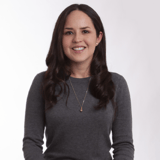Summary
Dave, head of a 50-person UX team at GE software, recounts how they tackled massive design challenges in a huge, decentralized company by developing a modular design system. Starting in 2011 under the leadership of Greg Petrov, their team was small but ambitious, aiming to bring consistent user experiences to thousands of software developers scattered throughout GE’s vast industrial ecosystem. Inspired by traditional industrial design and presentations like Mike Lemmon’s on interaction design languages, they shifted from rigid style guides to flexible, Lego-like toolkits for design and development. Collaborating with Frog Design experts such as Robert Fabricant and Ed Hicks, Dave’s team built a broadly adopted system focused on accelerating development, enabling better prototyping, and supporting consistency without stifling creativity. They discovered that their early system needed better governance, clearer usage guidelines, and easier extensibility, especially as teams demanded variations for marketing and healthcare applications. Today, GE’s UX organization in San Ramon has scaled to 60 designers integrated into cross-functional teams, evolving their design system with richer user insights and technology improvements. Central to their craft is co-creation, rapid prototyping, and maintaining shared understanding with stakeholders, all while continuing to refine the system to support complex industrial data visualization and brand coherence.
Key Insights
-
•
GE’s design challenges stem from being a decentralized matrix with 40,000 developers but fewer than 20 UX designers initially.
-
•
The team shifted from style guides to a Lego-like design system emphasizing tools, not rules, to drive adoption among developers.
-
•
Partnership with Frog Design brought valuable expertise in creating scalable, modular design systems for GE.
-
•
The design system accelerated software development by answering recurring UI questions and providing pre-built components.
-
•
The team saw early success with nearly 20,000 downloads inside GE for the design system, signaling wide adoption.
-
•
Despite adoption, the team acknowledged weaknesses like multiple confusing tab patterns and difficulty extending the system.
-
•
Healthcare and marketing teams created variations for empathy and communication needs, showing design system adaptability.
-
•
Sketches by Hey Studio became effective co-creation tools for storytelling and aligning stakeholders around user needs.
-
•
Moving from an isolated UX studio to embedded, cross-functional teams increased design’s influence across product delivery.
-
•
The evolving craft of UX at GE emphasizes rapid prototyping, co-creation, and shared understanding over just polished visuals.
Notable Quotes
"We landed on the mantra of tools, not rules to drive adoption with developers."
"If we could make something really easy for developers, we would drive adoption and continually improve user experiences."
"We didn’t have enough knowledge initially to have a strong opinion about what was good design for these users."
"A lot of people were just going and downloading the tear sheet, which is to be expected."
"We found that different failure modes of equipment have different spatial signatures on spider web charts."
"The most important thing about the design system is that it’s already coded — designers and devs just use it."
"It’s very tempting to bypass the sketching step and jump straight to high-fidelity prototypes — proceed with caution."
"We resisted the temptation to squash diversity of usage because we thought we’d learn from it."
"Prototyping and co-creation workshops have been a huge accelerant to the design process."
"Our craft today is about forming shared understanding and building prototypes, not just delivering polished visuals."
Or choose a question:
















More Videos

"If you have problems with Slack or the conference experience, please contact the help desk customer service."
Bria AlexanderOpening Remarks
November 18, 2022

"If you create a separate team to work on the future, make sure they stay focused on the future, or you’ll never get out of the trap."
Ted Booth Sam Ladner Fredrik Matheson Russ UngerDiscussion
June 8, 2016

"The companies that will attract talent moving forward are those that are most flexible and give people choices."
Alla WeinbergWorkers Are Sick of Change: The Cure is Psychological Safety
June 6, 2023

"Empathy and imagination combined with collaboration behaviors can help us live together more peacefully and improve the world."
Julie Gitlin Esther RaiceDesign as an Agent of Digital Transformation at JPMC
June 9, 2021

"The pace of radical participatory research must match the pace of availability, trust, and relationship."
Victor UdoewaRadical Participatory Research: Decolonizing Participatory Processes
March 9, 2022

"These questions haven’t gone away as I speak and do workshops and things like that around the book."
Christian CrumlishIntroduction by our Conference Chair
December 6, 2022

"We want you to feel included and be able to take advantage of the awesome content and speaker efforts."
Bria AlexanderDay 2 Welcome
September 24, 2024

"Strategy as a service: you just type in a URL and it will generate a strategy based on nothing whatsoever."
Simon WardleyMaps and Topographical Intelligence
January 31, 2019

"Quick pilots are low in commitment, highly visible, and get everyone excited while figuring out funding later."
Sarah AuslanderIncremental Steps to Drive Radical Innovation in Policy Design
November 18, 2022
















